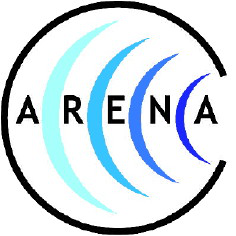Prof.
Olaf Scholten
(KVI, Univ. of Groningen)
30/06/2010 15:50
oral presentation
The general properties of coherent electromagnetic radiation from extensive air showers will be discussed. It will be shown how certain properties of the radio signal can be understood independent of the details of the model and how other aspects reflect properties of the shower that we want to determine. Most of the examples will be based on the Macroscopic GeoMagnetic Radiation model,...
Dr
Tim Huege
(Karlsruhe Institute of Technology)
30/06/2010 16:20
oral presentation
The LOPES experiment at the Karlsruhe Institute of Technology has been taking radio data in the frequency range from 40 to 80 MHz in coincidence with the KASCADE-Grande air shower detector since 2004. Various experimental configurations have been employed to study aspects such as the energy scaling, geomagnetic dependence, lateral distribution, and polarization of the radio emission from...
Mlle
Alexandra Saftoiu
(National Institute for Physics and Nuclear Engineering Horia Hulubei)
30/06/2010 17:20
oral presentation
We report here on analysis of 20 months of data taken with the LOPES radio antenna array set up in coincidence with the Grande array, both located at the Karlsruhe Institute of Technology, Germany. The radio antenna system is composed of 30 inverse-V-shape dipole antennas, 15 oriented in East-West and 15 oriented in the North-South direction.
We have restricted the analysis to a special...
Olivier RAVEL
(SUBATECH, Nantes)
30/06/2010 17:40
oral presentation
After a brief history of the CODALEMA experiment set up at the radio observatory of Nançay, main performances and scientific results will be presented: detection efficiency, demonstration of the geomagnetic origin of the air shower electric field, energy calibration… At last, the future evolution of the experiment will be explained.
Thibault GARCON
(SUBATECH, Nantes)
30/06/2010 18:10
oral presentation
The main characteristics of the environmental influence on the performances of the CODALEMA experiment are presented. It will be shown that the performances and sensitivity of the detector are not affected by the environment and that, moreover, some interesting, side observations can be made with such an instrument. Finally, it will be shown that the new setup of CODALEMA autonomous station...

